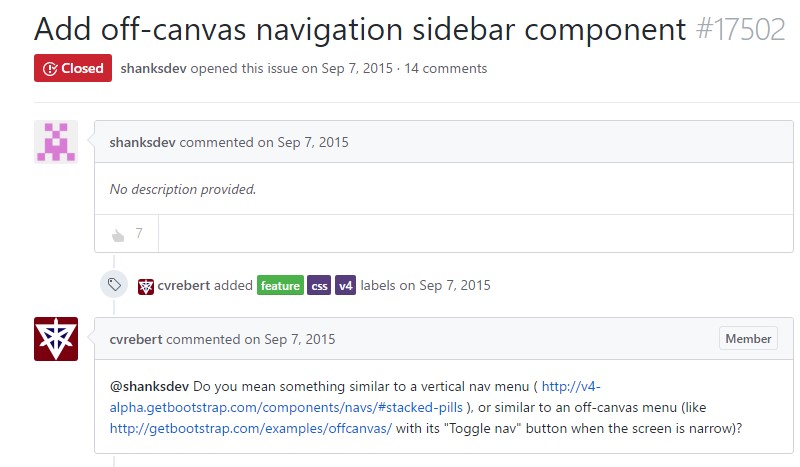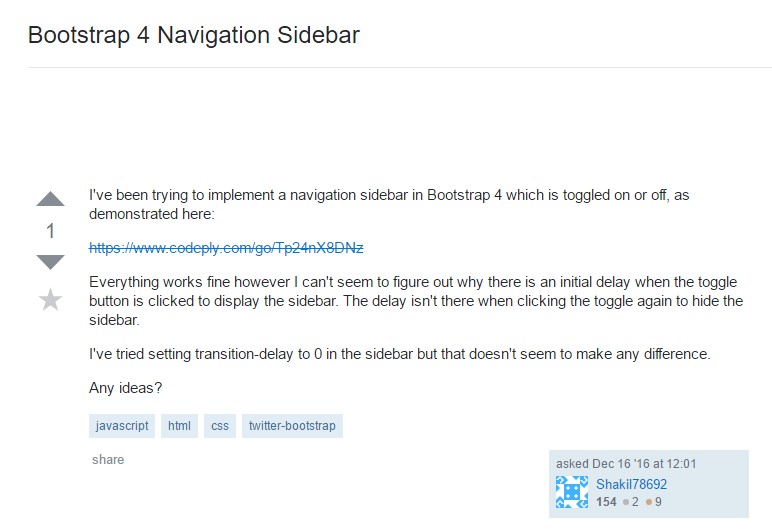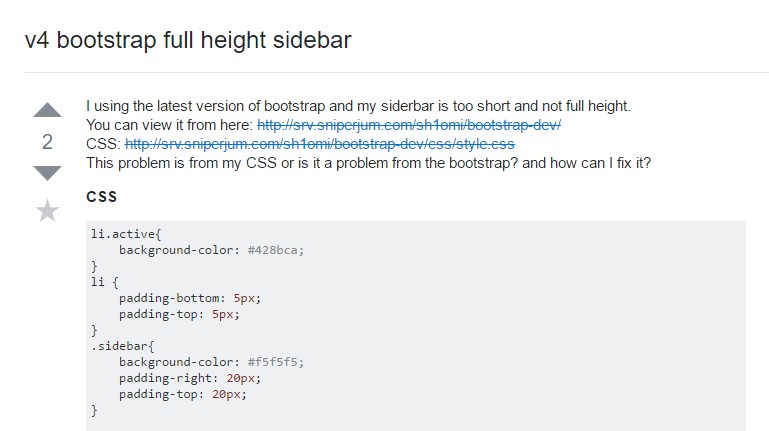Bootstrap Sidebar Submenu
Introduction
Within the majority of the web pages we just recently discover the material spreads from edge to edge in size with a handy navigation bar just above and simply just simply becomes resized once the identified viewport is reached so that more or less the showcased content fluently applies the full width of the page obtainable. However at a certain events the desired goal the pages must work in require together with the fluently resizing material location an additional area of the obtainable screen width to get assigned to a still vertical component with certain links and content inside it-- in other words-- the widely known from the past Bootstrap Sidebar feature is needed.
Exactly how to employ the Bootstrap Sidebar Responsive:
This is quite outdated solution however in the event that you really need to-- you can absolutely generate a sidebar component with the Bootstrap 4 system that in addition to its own flexible grid system also provide a couple of classes designed most especially for making a secondary rank site navigation menus being really docked along the webpage.
However let us set up it easy-- by means of simply just nesting some rows and columns -- It is presumed this maybe the best way. And also by nesting I indicate you have the ability to gave a .row component set inside a column one-- it basically functions the same solution with the exception of the provided columns in a single line limitation-- assuming that you nest a row inside a column you can have up to the column's width spanning inner columns within it before they wrap to a new line.
So let us say we need a right aligned Bootstrap Sidebar Content having a number of content inside it and a principal page to the left of it. We need to prepare the grid tier down to what we need to maintain this positioning before the sidebar and the basic information stack around each other-- let us state-- medium and up. Therefore a possible way attaining this might be this:
First and foremost we require a container element to maintain the columns and rows and considering that we are definitely building something a little bit more complicated the .container-fluid class could be the correct one to delegate it to-- in this way it will definitely regularly spread over the entire detectable width attainable.
Next we demand a .row to wrap the principal system into which in our instance would certainly be a large column for the content and a smaller sized-- for the sidebar-- let's say we'll break up the width in 9 by 3 columns in width. In this way the primary column element should possess .col-md-9 and the next one - .col-md-3 class employed.
Next in these kinds of columns we can easily just generate some supplemental .row features and pack them up up with a number of content making 1st the main webpage and after it-- the components of the sidebar a lot like two smaller sized web pages laid out side by side.
A handful of other suggestions
Additionally in case you need to create a sidebar navigation menu along with the desired .col-* class you can assign it the .sidebar class and wrap the page’s main content into a <main> element applying it the rest width with a .col-* class and appropriate offset equal to the sidebar’s width to make the nicely display side by side.
Furthermore in the event you have to generate a sidebar navigation menu along with the desired .col-* class you can certainly appoint it the .sidebarclass and wrap the page's leading content into a <main> element putting it the rest size using a .col-* class and suitable offset identical to the sidebar's width to make the nicely display screen side by side.
Look at several video guide regarding Bootstrap sidebar
Connected topics:
Add in off-canvas navigation sidebar element

Stackoverflow: Bootstrap 4 Navigation Sidebar

V4 Bootstrap full height sidebar

JavaScript Bootstrap Dropdown Menu Compilation
CSS Bootstrap Collapse Menu Demos